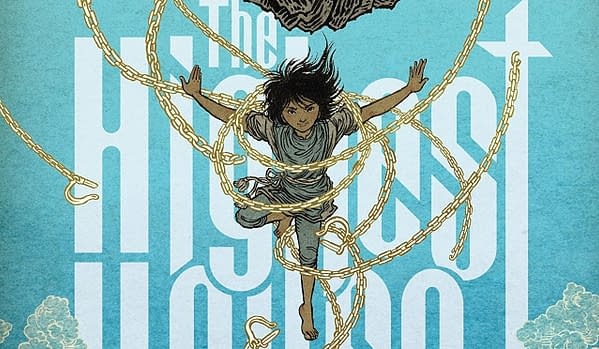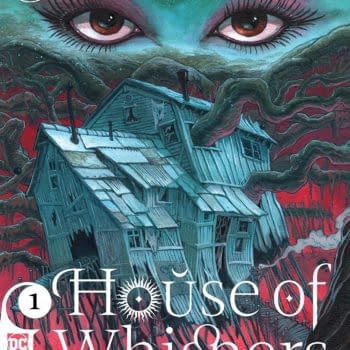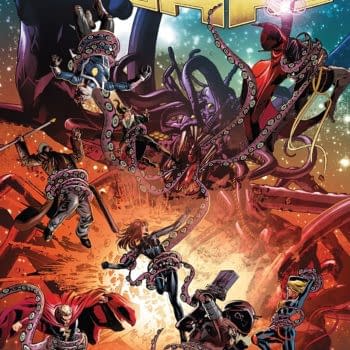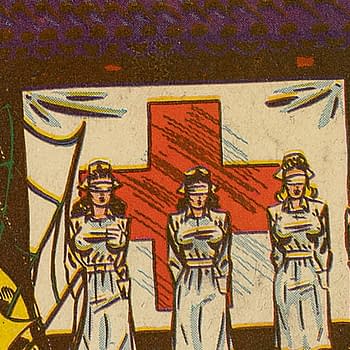Posted in: Comics, IDW | Tagged: fabien alquier, fantasy, highest house, idw publishing, mike carey, Peter Gross
Highest House #1 Review: Secrets of the Kingdom and Tiles Used for Roofing
A magister passes through a small village in search of slave workers for the monarchy's castle, the Highest House. Among his human purchases, the magister takes special interest in a young boy named Moth. During the travel back to Highest House, the caravan is attacked by bandits, which the mysterious magister brutally dispatches. Later in the trip, he explains the history of the realm and the Highest House to Moth.
Upon returning to Highest House, Moth is given to the servants in charge of roof maintenance. This is his life now.

Highest House #1 is a slow-moving and atmospheric fantasy story with meticulous world-building and deliberate omission for the sake of mystery. It's also interesting in ways that should not work by all logic, but we'll get to that part.
The slavery angle, while being a real-world unambiguously evil practice, is not used to outright condemn the people selling their children and associates to the magister. Even Moth's family, while still not absolved of their actions, primarily sell Moth (and fail in selling his sister) to feed the other children in the family.
We get some characterization of Moth in this first issue, but he mostly serves as an Oliver Twist-esque passive observer who serves as the audience surrogate in the exploration and explanation of how this realm, called Ossaniul, works from the magister.
The magister himself is the primary expositor of the Ossaniul's backstory. He's also cruel, duplicitous, and withholds the reason for his interest in Moth. Despite this, he is Moth's closest friend once the caravan leaves the village. He cares more for Moth than even the other slaves.
As you could likely surmise, there is a lot of outright exposition in this story, though they are relegated to two one-to-two-page segments throughout. That doesn't entirely excuse these dumps, but they are at least interesting enough to hold attention while openly withholding enough to leave you curious.
At least, the first one is like that.
The second is a long-form explanation of roof shingling. It covers slate, tile, wood, and thatching. This should be dull and completely unnecessary, and I could not blame someone for being turned off by this portion. However, I found it oddly entertaining. It's the same part of me that enjoys watching Bob Ross videos, I think. The orderly nature and friendly tone of the narrator in this segment, who is the roofing woman who chose Moth as her slave, left me satisfied while reading this part.

Peter Gross's artwork and Fabien Alquier's coloring bring the atmospheric element mentioned towards the beginning. Gross's work is stylized and not too far removed from 1990s Disney Renaissance-era cartooning. It's detailed, flowing, and overall gorgeous. The magister, in particular, reminded me visually of Jafar from Disney's Aladdin. None of this to say that the artwork strays from blood or nudity; both are present. However, the style is used to give Highest House a distinct visual identity by using similar style principles. Alquier's color art is cold and isolating in its palette choices, and that gives unforgiving overtones to this beautiful yet desperate tale.
Highest House #1 grabbed me and never let go. This was a wonderful tale of anguish and the unseen powers-that-be in the fictional world of Ossaniul. Writer Mick Carey and artists Gross and Alquier do phenomenal work here. I highly recommend this one. Give it a read.













